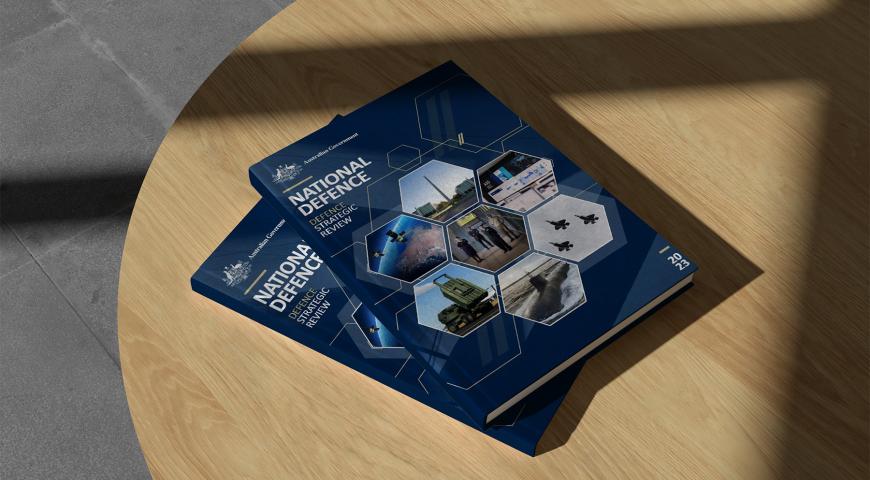Abstract
The Human Impact of Right and Wrong in a War Zone: Observations and Reflection 20 Years On
This paper examines the enduring psychological and ethical implications of wartime decision-making, drawing from two case studies involving Australian soldiers in Baghdad in 2004 and 2006 which the author experienced firsthand. Analysing the incidents through ethical frameworks alongside theories of cognitive dissonance, it reflects on how these events are processed over two decades. The analysis underscores the long-term moral, psychological, and professional effects of such decisions, contributing to broader discussions on military ethics and post-conflict resilience.
Introduction
Combat environments challenge individuals with ethical dilemmas that often transcend standard training, rules and conventional expectations. Military people face decisions in which the distinctions between right and wrong are often hugely blurred, which can leave long-lasting moral scars (Shay, 1994). The responsibility for ethical decisions applies to all ranks and levels of command, from the most junior soldier to the highest senior commanders, requiring everyone to be prepared. This paper uses two incidents from the Australian deployment to Baghdad in 2004 and 2006 as case studies to explore the frameworks of deontological ethics, consequentialism, virtue ethics, and cognitive dissonance.
The study reflects on these events with the benefit of 20 years of hindsight, highlighting the enduring moral processing of such decisions. These insights contribute to the continually growing body of literature on military ethics, and the moral injuries that can accompany wartime service (Litz et al, 2009). Preparing military people to make ethically grounded decisions will always remain vitally important. Specifically for three main reasons. Firstly, so our military acts in a way that represents the expectations and values of the nation. Secondly, to ensure adherence to international laws and conventions governing armed conflict, as this maintains the moral integrity and legitimacy of military operations. Thirdly, so the individual can minimise the deep personal impact of having to make those decisions. By knowing that they have made the ‘right’ decision, or at least the ‘most right’ decision, it will minimise the likelihood of longer-term mental and emotional harm.
Background
On 25 October 2024, a group of middle-aged men met at the Australian War Memorial to recognise an event that left an enduring impact on them all. They recalled their experiences in Baghdad in 2004. A city in turmoil, grappling with sectarian violence, insurgency, and systemic instability exacerbated by the dismantling of Iraq's civil and military institutions (Chandrasekaran, 2006). This group had been members of the cavalry troop which was part of a larger 110-person combat team tasked with protecting Australian diplomats. Specifically, this group provided protected mobility to the Australian ambassador and his team of diplomats in the war zone.
Rules of engagement that aim to minimise harm often conflict with the realities on the ground, leading to profound ethical dilemmas.
On the streets of Baghdad these soldiers had faced daily threats, including improvised explosive devices (IEDs) and vehicle-borne IEDs (VBIEDs). Twenty years earlier to the day of their get-together in Canberra, they had faced realisation of these threats when one of their patrols was targeted by an IED. The author was among them and was wounded in the attack.
The author returned to Australia due to wounds while the others in that group completed another three months in Iraq. Following that assignment, many deployed again on multiple operational deployments to Iraq and then later to Afghanistan. Collectively they hold an incredible repository of anecdotes and lived experience. The author has been fortunate enough to be able to observe and draw on this over the past two decades.
As such there are two incidents that serve as focal points for this paper:
- The management of VBIED threats under restrictive rules of engagement from 2004.
- A tragic misidentification incident involving ministerial bodyguards in 2006.
These cases underscore the ethical complexities of wartime decision-making and its long-term effects on those involved.
Case Study 1: The Ethical Dilemma Navigating VBIED Threats
Using lethal force against another human is one of the gravest acts a person can commit, and for military personnel it is a frequent contemplation and training focus. The decision to take a life or not act and witness a life being taken can have profound, lasting impacts.
In Baghdad 2004, the strict orders prohibited warning shots, creating tension between adherence to protocol and the practical necessity of distinguishing threats. Soldiers had to decide whether to risk lives by strictly following orders or to take potentially illegal actions to avert imminent danger.
Before deploying to Iraq, military personnel received numerous briefings, many of which were legal in nature. Operating as foreign soldiers in a nation with an interim government involved complex legalities. Mistakes could cost lives, and illegal actions could have severe legal and international consequences, potentially harming Australia's reputation.
Soldiers were briefed on the legal circumstances under which lethal force could be used, the escalating steps required before using it, and the specific targets and methods for administering lethal force. These rules, derived from international laws of armed conflict, Australian law, and Iraqi law, were presented clinically, despite their violent nature.
Legal officers provided scenarios to illustrate these rules: protecting civilians, not firing despite being fired at, and determining when to fire at an enemy combatant or a boy with a Molotov cocktail. However, these scenarios often lacked the nuance and context needed for soldiers to make confident decisions, leading to confusion. Soldiers saw grey areas where legal officers saw black and white.
The rules were straightforward: if a soldier believed their life or the life of someone they were protecting was in danger, they could use lethal force. If possible, they were to follow a series of escalating steps: shout 'STOP!', raise their hand, raise and cock their weapon, and then fire only enough to neutralise the threat. This process was at times challenging for cavalry soldiers in armoured vehicles, who could not always physically show their weapons and follow the prescribed steps.
One significant rule was that warning shots were not authorised. This decision, based on the unpredictability of where a warning shot might land, was a source of frustration and ethical dilemmas. Most other nations' militaries allowed warning shots, but Australian soldiers had to adhere strictly to this rule.
Intelligence briefings detailed various threats, including roadside bombs, suicide IEDs, rocket attacks, snipers, and VBIEDs. These briefings described the typical appearance and behaviour of VBIEDs, but in Baghdad, many civilian vehicles matched these descriptions, creating constant tension and uncertainty.
Experience showed that firing at a vehicle's bonnet or boot could distinguish a civilian from a suicide driver: civilians would swerve, while suicide drivers would accelerate. However, per the rules, firing at anything other than the driver was considered a warning shot.
The soldiers faced a dilemma: they travelled on roads daily, escorting diplomats and military personnel, while suicide VBIEDs targeted these same roads. Civilian vehicles, often indistinguishable from VBIEDs, drove unpredictably. The soldiers had limited means to communicate an escalation of force, and warning shots were not permitted. If they fired, it had to be at the driver's centre mass, risking innocent lives. Allowing a VBIED to get close could result in a catastrophic explosion, endangering the soldiers and those they protected.
Deontological Perspective
Deontology emphasises adherence to rules regardless of outcomes (Kant, 1785/1993). Soldiers were bound by rules of engagement prohibiting warning shots. While compliance ensured legal accountability, it often conflicted with their lived reality, where improvisation was vital for survival.
It also generated a much greater issue. To follow the rules, if a soldier did fire, they must legally aim at the occupant. They must shoot to kill. In this somewhat early stage of Australia’s commitment to military deployments in Iraq, views on disabling shots and non-lethal munitions were still maturing.
Beyond it all, following the rules had a deeper impact: fear. Fear that they would get it wrong. Shoot and kill an innocent. Don’t shoot and allow yourself, your crew and passengers to become another tragic statistic of the diabolical VBIED threat. It led the team to the conclusion that, while firing at vehicles and at drivers was ‘legal’, often it was not ‘right’.
The reality was that there emerged what could have been viewed as normalised deviance.
Consequentialist Perspective
Consequentialism prioritises outcomes, justifying actions based on their ability to minimise harm (Mill, 1861/2002). Under threat of VBIED attack, soldiers faced the consequentialist challenge of balancing the immediate necessity to prevent an attack against the potential for collateral damage.
Overlaid was the national imperative that ‘Australia’s role in Iraq is to help the people of Iraq rehabilitate and rebuild their country’. This was dictated at the top (in bold) of the very cards the soldiers carried everywhere, that directed their ‘orders for opening fire’ and specifically prohibited warning shots.
Virtue Ethics Perspective
Virtue ethics focuses on the character and intentions of the individual (Aristotle, trans 1999). Soldiers acted with courage and responsibility, virtues ingrained through military training. Their decisions, even when deviating from rules, reflected a commitment to protecting lives and fulfilling their mission.
The modification of engagement procedures to include firing at vehicle engine blocks may have reflected an attempt to reconcile ethical principles with operational realities. Two decades later, soldiers involved still reflect on these decisions, grappling with pride in protecting lives and lingering doubt about the ethical ambiguities they faced. Moral injury—a psychological state resulting from the perceived violation of one’s ethical code—remains a key factor in their long-term processing (Shay, 1994; Litz et al, 2009).
For some, any doubt was addressed in January 2005.
Case Study 2: Tragedy at the Ministry of Trade
In a high-pressure environment, a perceived threat can lead to critical, split-second decisions. This case study examines an incident involving Australian soldiers during a routine operation to escort a trade representative to the Iraqi Ministry of Trade. The operation presented unexpected challenges that tested the soldiers' decision-making under duress.
Upon departing the Iraqi Ministry of Trade, the soldiers encountered a rapidly approaching white four-wheel-drive vehicle that suddenly accelerated towards them, attempting to swerve between the armoured vehicles. Interpreting this as an imminent threat, three soldiers opened fire, leading the vehicle to lose control and crash into the wall of the ministry. Subsequently, it was revealed that the occupants were ministerial bodyguards rather than insurgent fighters, highlighting the complexities faced by soldiers in combat zones.
When the patrol returned to the compound following the operation, the soldiers, still believing they had thwarted an attack, were in a euphoric adrenaline-fuelled high. This reversed with a sudden and dramatic emotional crash when the news emerged that the car was carrying ministerial bodyguards and relatives of the Iraqi Trade Minister. One had been killed; three others badly wounded.
The subsequent investigation found the soldiers had acted appropriately and legally. The only formal criticism was that they could have opened fire earlier and they had let the vehicle get too close. The investigator argued that, if the car had been a VBIED, the consequences could have been catastrophic.
This case study explores the ethical frameworks that guided the soldiers' actions, the immediate responses, and the long-term reflections on the moral and emotional consequences of their decisions.
Deontological and Consequentialist Perspectives
The soldiers’ actions adhered to their rules of engagement, validating their behaviour under the circumstances. However, this deontological framework failed to address the emotional weight of unintended harm (Walzer, 1977).
One of the three soldiers involved in the shooting appeared to take solace in the outcome. He appeared to take a purely deontological view of the incident which led him to a conclusion that he was ‘right’ in his actions. While he showed genuine remorse and compassion, he did not display guilt.
Conversely, consequentialism highlights the tragedy of unintended consequences. Although the immediate threat was neutralised, the broader outcomes included loss of life, diplomatic repercussions, and lasting psychological impacts on the soldiers involved. None of those involved likely saw the outcome of this incident as ‘pleasurable’ or having ‘minimised harm’.
Virtue Ethics Perspective
The soldiers acted with courage and duty, embodying the virtues emphasised in their training. Yet the dissonance between their intentions and the tragic outcome reflects the limitations of virtues when contextual realities defy ethical clarity (Hursthouse, 1999).
The second soldier involved sank into a deep depression. He faced moral questions he struggled to answer: as a soldier it was his role to protect the innocent and aspire to the virtues of courage, responsibility, compassion, judgement, accountability and respect. Instead, he had possibly killed an innocent man. He spent several days detached and sullen. It was only after a phone call with his father that he started to reconcile the incident.
Long-Term Reflection
Reflecting on this incident two decades later, soldiers continue to process the moral and emotional weight of their actions. Cognitive dissonance theory explains how conflicting feelings of justification and regret can lead to prolonged distress (Festinger, 1957). The concept of moral injury further illuminates the enduring struggle to reconcile such events with personal values (Litz et al, 2009).
The third soldier, Jamie, the larrikin of the cavalry troop, took it extraordinarily hard. Unbeknown to many of us, he was deeply religious. The event clashed with his spiritual beliefs. He had used lethal force on innocent men, and it was possible he had been responsible for the death of one of them. It went against everything he saw himself to be, and everything his religion said he should be.
The incident changed this young man. He never quite recovered. He met regularly with our resident psychologist and padre. He was given tools to help him process the event and make peace with himself, but it is unlikely he ever really did. This was an experience he could not grow from; rather, it took something from him that he was never able to get back.
Cognitive Dissonance and Long-Term Processing
Cognitive dissonance arises when actions conflict with deeply held beliefs or values (Festinger, 1957). For many soldiers, the necessity of taking life in combat often contradicts their moral foundation, creating psychological distress. Both case studies demonstrate this tension, highlighting the difficulty of reconciling wartime decisions with personal ethics.
Over two decades, individuals had demonstrated how they have processed these events in varied ways. Some have found solace in their adherence to duty and the recognition of their sacrifices. Others experienced guilt, self-doubt, and post-traumatic stress, particularly in cases where support was lacking (Shay, 1994). Resilience depends on access to meaningful opportunities for ethical reflection, and the validation of their experiences within the military community (Litz et al, 2009). Anecdotally, many who have struggled to reconcile their actions from these two experiences have often not had opportunities for reflections and validation.
Broader Implications of Ethical Decision-Making in Combat
Military training prioritises operational readiness but often lacks structured opportunities for ethical deliberation (Lucas, 2009). Incorporating ethical training will better prepare soldiers for the moral complexities of combat and may reduce the long-term psychological burden of their decisions.
Additionally, leadership plays a crucial role in providing clear guidance and fostering ethical adaptability. Equipping soldiers with agile rules of engagement and robust post-deployment support can mitigate the emotional and moral repercussions of combat decisions (Dowie, 2011).
Decisions made in war zones reverberate long after the moment has passed. Acknowledging the enduring impact of these choices on individuals is essential for promoting ethical accountability and supporting those who have had to make critical decisions in dire circumstances. (Walzer, 1977; Litz et al, 2009).
Conclusion
These ethical dilemmas faced by Australian soldiers in Baghdad in 2004 and 2006 exemplify the profound human impact of wartime decision-making. By examining these events through ethical frameworks, alongside cognitive dissonance theory, this paper highlights the complexity of reconciling combat decisions with the person and military professional.
Twenty years on, the enduring effects of these decisions underscore the need for comprehensive ethical training, compassionate leadership, and sustained institutional support. These measures can help individuals navigate the moral challenges of combat with resilience and integrity, honouring both their service and humanity.
Aristotle 1999), Nicomachean Ethics (Irwin T, trans), Hackett Publishing.
Callender G 2023, Best Possible Outcome: Business Decision-Making and Crisis Planning, Wiley.
Chandrasekaran R 2006, Imperial Life in the Emerald City: Inside Iraq’s Green Zone, Bloomsbury Publishing.
Dowie M 2011, Ethics Education in the Military, Ashgate Publishing.
Festinger L 1957, A Theory of Cognitive Dissonance, Stanford University Press.
Hursthouse R 1999, On Virtue Ethics, Oxford University Press.
Kant I 1993, Grounding for the Metaphysics of Morals (Ellington JW, trans) Hackett Publishing (Original work published 1785).
Litz BT, Stein N, Delaney E et al 2009, Moral injury and moral repair in war veterans: A preliminary model and intervention strategy. Clinical Psychology Review, 29(8), pp. 695–706.
Lucas G 2009, Anthropology of Ethics in War, Princeton University Press.
Mill JS 2002, Utilitarianism (Crisp R, Ed), Oxford University Press (Original work published 1861).
Shay J 1994, Achilles in Vietnam: Combat Trauma and the Undoing of Character, Simon & Schuster.
Walzer M 1977, Just and Unjust Wars: A Moral Argument with Historical Illustrations, Basic Books.
Social Mastery
The Human Impact of Right and Wrong in a War Zone © 2025 by . This work is licensed under CC BY-NC-ND![]()
![]()
![]()
![]()
Please let us know if you have discovered an issue with the content on this page.
Comments
Start the conversation by sharing your thoughts! Please login to comment. If you don't yet have an account registration is quick and easy.




